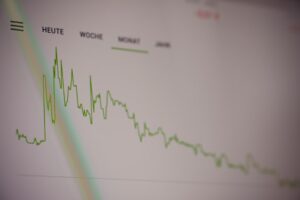The forex market is a complex and dynamic market, where traders from all over the world exchange currencies. In order to be successful in forex trading, it is essential to have a deep understanding of the market and the factors that influence it. One such factor is the Commitment of Traders (COT) report, which provides valuable insights into the positioning of different market participants. In this article, we will explore the role of COT data in forex trading strategies.
The COT report is published by the Commodity Futures Trading Commission (CFTC) on a weekly basis. It provides information on the positions held by different types of traders in the futures market. The report categorizes traders into three main groups: commercial traders, non-commercial traders, and non-reportable traders.
Commercial traders are typically large corporations or financial institutions that use the futures market to hedge their exposure to currency fluctuations. They are considered to be the smart money in the market, as they have access to more resources and information compared to retail traders. Non-commercial traders, on the other hand, are typically large speculators such as hedge funds or investment firms. They trade futures contracts for profit and are often considered to be the dumb money in the market. Finally, non-reportable traders are small traders who do not meet the reporting requirements set by the CFTC.
The COT report provides information on the net positions of each category of traders. A positive net position indicates that a majority of traders in a particular category are long on a currency, while a negative net position indicates that a majority of traders are short. By analyzing the COT data, forex traders can gain insights into the sentiment and positioning of different market participants.
One way to use COT data in forex trading strategies is to identify potential trend reversals. When the net positions of non-commercial traders reach extreme levels, it can indicate that the market sentiment is overly bullish or bearish. For example, if non-commercial traders are heavily long on a currency, it could indicate that the market is overbought and due for a correction. Conversely, if non-commercial traders are heavily short, it could indicate that the market is oversold and due for a rally. By monitoring these extreme levels and combining them with other technical indicators, traders can identify potential turning points in the market.
Another way to use COT data is to confirm or validate existing trading signals. For example, if a trader receives a buy signal based on a technical indicator such as moving averages or trend lines, they can use the COT data to see if the positioning of market participants supports the signal. If the COT data confirms the signal, it can provide additional confidence in the trade. On the other hand, if the COT data contradicts the signal, it may be a warning sign that the signal is not reliable.
Furthermore, COT data can be used to gauge the strength of a trend. When the net positions of both commercial and non-commercial traders are aligned in the same direction, it can indicate a strong trend. Conversely, when the net positions of these two groups diverge, it can indicate a weakening trend or a potential trend reversal. By monitoring the COT data on a regular basis, traders can stay informed about the strength and direction of the trend and adjust their trading strategies accordingly.
In conclusion, the Commitment of Traders (COT) report provides valuable insights into the positioning of different types of traders in the forex market. By analyzing the COT data, traders can gain insights into market sentiment, identify potential trend reversals, validate trading signals, and gauge the strength of a trend. However, it is important to note that COT data should not be used in isolation and should be combined with other technical and fundamental analysis tools.






